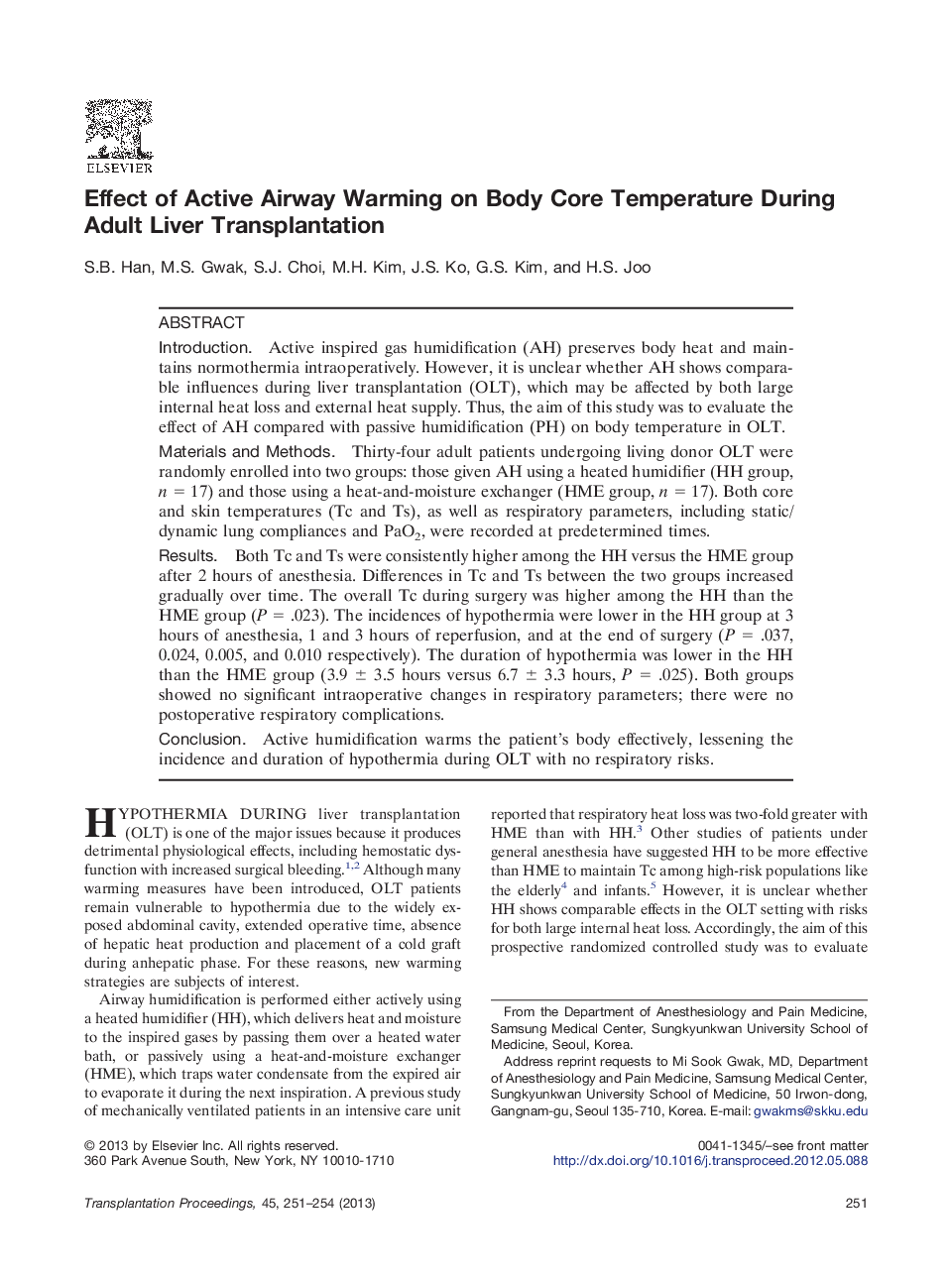| Article ID | Journal | Published Year | Pages | File Type |
|---|---|---|---|---|
| 4257101 | Transplantation Proceedings | 2013 | 4 Pages |
IntroductionActive inspired gas humidification (AH) preserves body heat and maintains normothermia intraoperatively. However, it is unclear whether AH shows comparable influences during liver transplantation (OLT), which may be affected by both large internal heat loss and external heat supply. Thus, the aim of this study was to evaluate the effect of AH compared with passive humidification (PH) on body temperature in OLT.Materials and MethodsThirty-four adult patients undergoing living donor OLT were randomly enrolled into two groups: those given AH using a heated humidifier (HH group, n = 17) and those using a heat-and-moisture exchanger (HME group, n = 17). Both core and skin temperatures (Tc and Ts), as well as respiratory parameters, including static/dynamic lung compliances and PaO2, were recorded at predetermined times.ResultsBoth Tc and Ts were consistently higher among the HH versus the HME group after 2 hours of anesthesia. Differences in Tc and Ts between the two groups increased gradually over time. The overall Tc during surgery was higher among the HH than the HME group (P = .023). The incidences of hypothermia were lower in the HH group at 3 hours of anesthesia, 1 and 3 hours of reperfusion, and at the end of surgery (P = .037, 0.024, 0.005, and 0.010 respectively). The duration of hypothermia was lower in the HH than the HME group (3.9 ± 3.5 hours versus 6.7 ± 3.3 hours, P = .025). Both groups showed no significant intraoperative changes in respiratory parameters; there were no postoperative respiratory complications.ConclusionActive humidification warms the patient's body effectively, lessening the incidence and duration of hypothermia during OLT with no respiratory risks.
